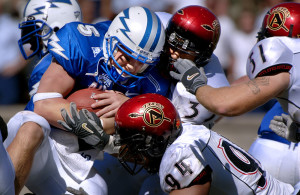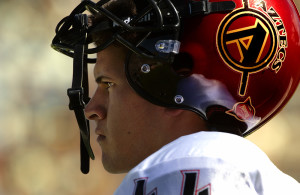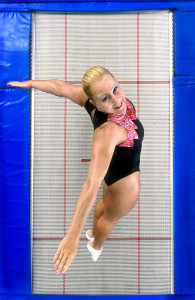Workshop at the Ranch – June 2013 – More of Your Questions and My Answers
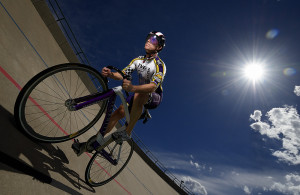 Hi and welcome to this edition of Workshop at the Ranch (WATR). The response to last month’s Qs and As was terrific! So, here we go again with More of Your Questions and My Answers. You email me a question and I’ll answer it……
Hi and welcome to this edition of Workshop at the Ranch (WATR). The response to last month’s Qs and As was terrific! So, here we go again with More of Your Questions and My Answers. You email me a question and I’ll answer it……
|
So, when I release my thumb from the AF Back Button, the auto focusing stops. Now I can turn to the bench area for a quick portrait,…AF Back Button on a player’s face, release AF Back Button and recompose the scene,… take some shots and then go back to the action and simply press the AF Back Button with my thumb to activate the auto focus. I always have AF set in Continues mode. I do not use Single Servo mode ever. I simply stop the AF by taking my thumb off the back button.
Using the AF Back Button is easier, but, using the AF Back Button is a major change for me and one that is taking a little time to get use to. Hope this answer helps. Dave |
|
A… Hi Paul. Thanks for all the kind words. I do believe the Canon Speedlites work with the FourSquare. … There is a Q&A section in the Lightware Direct website. Paul Peregrine, the owner and designer of the FourSquare demonstrates the Canon Speedlites being mounted to the FourSquare. Check it out at… www.lightwaredirect.com You should be all set and ready to make pictures. Adios. Dave |
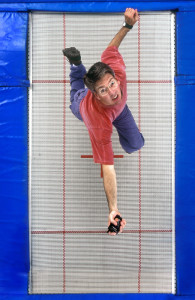 Images 3A and 3B Olympic Heights … Nikon f3 (film camera), Kodak Lumiere 200 Film (these two images from 1999 were made at the end of the film era for me), 1/250 flash sync speed at f5.6, Nikon 28mm lens, 4 Elinchrom 1000R Sport Strobes (no longer available in the US), Pocket Wizards (1st generation transmitters and receivers…I’m holding and firing the transmitter in my hand) Manfrotto Lightstands, Magic Arm, and Super Clamps…and a Genie Lift. Images 3A and 3B Olympic Heights … Nikon f3 (film camera), Kodak Lumiere 200 Film (these two images from 1999 were made at the end of the film era for me), 1/250 flash sync speed at f5.6, Nikon 28mm lens, 4 Elinchrom 1000R Sport Strobes (no longer available in the US), Pocket Wizards (1st generation transmitters and receivers…I’m holding and firing the transmitter in my hand) Manfrotto Lightstands, Magic Arm, and Super Clamps…and a Genie Lift.
Q… Hi Dave. I’m trying to take some hyper-sync shots utilizing beautiful landscapes as backgrounds, I wand to focus on board sports (skateboarding, surfing, and snowboarding) but I’m also open to any other action sports like rock climbing, mountain biking, white water kayaking, or motocross. As you know these sports require athletes with a decent level of expertise in order to get good shots. I like all sports and the reality is that I’m open to go the extra mile to capture amazing images because I know how hard athletes work in order to improve. thanks again, Carlos Rodriguez A… Hi Carlos. It will be your task to find suitable athletes and convince them that you will be worth their time because of the unique image that you will make of them…and for them. Athletes tend to be very visual people. Make some example images with more accessible “novice athletes”…a “Dry Run” so to speak. Show these unique images to higher caliber athletes that you want to photograph. They will often times see the potential and hopefully give you a shot. Also, by doing the lesser athlete first you will probably work out any bugs or flaws in the making of these unique images. Then, when the pressure is on to make the same style image with a top athlete you will 1. not fail,…and 2. not be nervous because you will have done the picture already… 3. Make a great picture. Best of luck to you Carlos. Adios. Dave
NOTE: This photo shoot with Jennifer Parilla, a Trampolinist who was on the USA Olympic Team going to the Sydney 2000 Olympic Games, was made for Newsweek magazine. Image 3A is a test image made during what I call a “Dry Run”. As I suggested to Carlos, I made a “Dry Run” of the photo shoot the day before I photographed my athlete, Jennifer Parilla.
The “novice athlete” …is me. What can I say accept no one else was available. I made a few jumps (from my University days as a competitive gymnast) and took a few test shots while in mid-air. We processed the film, made some tweeking to the strobes, and also raised the Remote camera to about 3 feet from the ceiling. Everything was ready for my Olympian. The “Dry Run” gave me plenty of confidence that the lighting looked good, the Remote camera worked properly, and that interesting pictures would be made the next day of Jennifer…example: Image 3B.
|
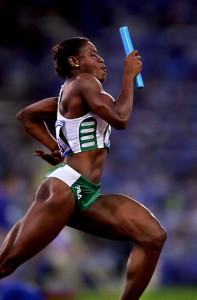 Image 4 Olympic Centaurous … Nikon D1, ISO1000, 1/500 second at f2.8, Nikon 70-200mm zoom lens, WB 6500K, SanDisk 64MB Flash Card. Image 4 Olympic Centaurous … Nikon D1, ISO1000, 1/500 second at f2.8, Nikon 70-200mm zoom lens, WB 6500K, SanDisk 64MB Flash Card.
Q… Hi Dave. In your Action Sport Flash course on Kelby you mention that you have shot a lot of Track & Field events. I have just started shooting free lance for a local newspaper here in VA and have landed an assignment to cover our state track & field championship events. Would you have a few moments to offer advice on how to capture this, as you did in your Football video? What vantage point to take and how to angle for position One tech question-would you recommend shooting w/ more DOF to ensure focus- say 5.6/8? Best regards, Doug A… Hi Doug. T&F is a great sport to photograph. High School level athletic events always provide great action and lots of emotion. The problem is finding a clean background at the High School venues… too many officials, banners, trash cans, etc, are always lurking in the background. Try to shoot wide open at f2.8 or f4.0. This will give you a “short depth of field” and help diffuse the background, and thus reduce the distracting clutter. Also, get the lowest angle of view that you can, especially for the track events. This will really help clean the background and also make your athletes look more dynamic. At the Olympics photographers have the advantage of shooting from a 5 foot deep mote that borders around the track. This allows photographers to shoot from “Ground Level” even though we are standing up. It is the ground level view that makes sprinters and hurdlers look spectacular. You can achieve the same dynamic look by using a beanbag or small pillow on the ground to rest your long lens (200mm, 300mm or 400mm). This means you’ll be lying on your stomach…for a long time…but it makes great pictures. Do your homework and find out who has the fastest times this season? Who are the favorites? Who will the University powerhouse programs looking at? These athletes will be the one’s to watch for, and make great pictures of for your newspaper. If you can get close on the inside of the track, I like to use a wide angle as the “pack” runs by me. Try some pan action at slow shutter speeds…1/60 and 1/30. And shoot the emotion…both victory and defeat. Best of luck…..take some sunscreen with you.
Adios. Dave |
My thanks to those who emailed me some terrific questions. I hope these answers help many of you make great pictures.
See you next month where I will continue answering your questions.
Adios. Dave


